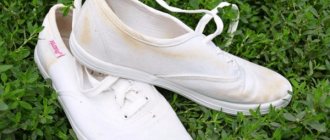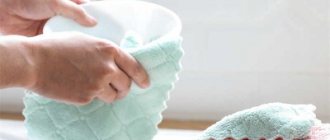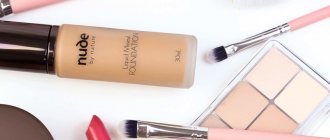| Place | Name | Characteristics in the rating |
| Top 10 best products for cleaning upholstered furniture |
| 1 | Pip “For removing stains” | The best organic stain remover |
| 2 | IVIclean "proTECt" | The most gentle care for fabric surfaces |
| 3 | BUGS SHTIKHONIT | The best disinfectant |
| 4 | VANISH | High efficiency |
| 5 | NORDLAND | Cleaning upholstery made from natural materials |
| 6 | UNICUM | The best combination of price and quality |
| 7 | Ekokemika Textile Interior | Does not leave streaks after use |
| 8 | GraSS Universal cleaner | Effective for all types of fabric |
| 9 | TUBA | Quick and dry cleaning |
| 10 | Pro-Brite Lenot | Economical professional textile cleaner |
Each house has at least one set of upholstered furniture. In rare cases, it serves well for many years and does not need cleaning. The presence of children, pets, as well as the habit of household members to eat while sitting in an easy chair inevitably adds stains to the upholstery. Simple daily cleaning activities cannot get rid of such contaminants. A deeper cleaning using special products is required.
Some people use removable covers for upholstered furniture, washing them periodically in an automatic machine. But this does not help with all stains. Dust, abundant liquid pollution, and animal traces can only be thoroughly treated with chemicals. The best option for cleaning surfaces at home is cleaning with special liquids. When choosing, they are guided by the quality of the material, the intensity of contamination, and safety. Before you start cleaning, you should conduct a test on a small area to make sure that the method is suitable for the item. The most effective of them are presented below in our rating of upholstery cleaning products.
Why 100% dry cleaning results are not guaranteed even by a professional master
A good furniture dry cleaner knows what products need to be used to remove different types of stains and how materials react to different chemical components. But this knowledge does not always help to obtain the expected result.
What difficulties may arise:
► The contamination has a mixed composition (for example, wine + blood + coffee with milk + brilliant green). To remove complex stains, you need different stain removers, which may react “not in the best way” when interacting.
► The stain was “placed” a long time ago. Over time, contaminants become fixed in the structure of the material, and their composition changes. For example, a protein gradually polymerizes to form a water-insoluble substance.
► The old stain mixed with other stains and became difficult to “identify”. In this case, craftsmen have to test different products at random.
► There are other contaminants in the filler under the upholstery that are not visible on the surface. When you try to wash a stain with water, hidden contaminants may appear on the material.
► The filler contains natural tannin-containing materials - for example, coconut fibers. When such materials come into contact with water, brown halos may appear on the upholstery, which become fixed when interacting with alkaline agents.
The result of dry cleaning a sofa depends on the “age” and composition of the stain, as well as the type of material and filling.
What the sofa owner should know before cleaning it themselves:
► Manufacturer’s recommendations for cleaning upholstery material – is it safe from mechanical impact, can solvents be used, how does it react to water, etc.
► Filler composition – whether there are materials made from natural fibers containing tannins.
Return to contents
Read the blog: “5 reasons to agree to turbo drying after dry cleaning a sofa or carpet.”
Ways to combat the rapid appearance of dust
Methods to combat the rapid formation of dust are as follows:
- Daily wet cleaning of the entire apartment. Particular attention is paid to the corridor and hallway. This will prevent dirt from moving to other rooms.
- Step-by-step work with cleaning furniture. First, it is vacuumed and then wiped with a damp cloth.
- Use damp woolen cloth or napkins with lint. It is not recommended to use brooms for sweeping the floor. The ideal option is a washing vacuum cleaner.
- Use of special filters in vacuum cleaners.
- Mandatory removal of dirt from hard-to-reach places.
- Regular cleaning of duvets and pillows in companies that use special equipment.
- Periodically knocking dust out of clothes, as well as soft toys and regular washing of bed linen.
- Perform cosmetic procedures and comb your hair in the bathroom. To remove hair, use sticky tools.
- Regular brushing of pets outdoors.
- Use of special detergents in cleaning.
Houseplants against dust
There are certain types of indoor plants that can attract dust, and the housewife can only wipe the leaves with a damp cloth.
Helps remove dust:
- Ficus benjamina. Absorbs toxic compounds released by some plastic and other products.
- Chlorophytum. Absorbs any toxic substances in the room.
- Geranium. Destroys germs and bacteria.
- Spathiphyllum. Suppresses the development of mold.
- "Mother-in-law's tongue." Successfully resists nitrogen oxides.
- Cypress. Effectively attracts negative ions coming from electrical appliances.
- Gerbera. They actively absorb carbon dioxide and release oxygen.
- Begonia. Destroys microorganisms and humidifies the air.
- Dieffenbachia. Destroys staphylococcus and toxic compounds.
- Scheffler. Absorbs nicotine. This plant is useful in an apartment whose owner prefers to smoke while sitting in a chair instead of going out onto the balcony.
Ways to eliminate dust
Small particles will not cover the surfaces of solid objects longer if they are treated with factory detergents. They remove static electricity, which prevents dust from being attracted. You can use your own preparations.
Lemon solution works well. It reliably removes minor dirt, after which no streaks or drips remain. To prepare this composition, pour small lemon slices with vegetable oil and wait 5 days. Boiling water is added to the resulting preparation, filtered and the fabric is soaked in it. Then it is dried and all surfaces are wiped with it.
Lavender oil is an excellent antistatic agent. It is stirred in water, and then using a cloth soaked in the solution, the furniture is wiped. A good solution is a mixture of bleach dissolved in water. Another option for a natural antistatic agent is a composition made from water and regular salt. Polished surfaces can be wiped with glycerin diluted with water.
Important! You can add water and shampoo to any antistatic agent, mix thoroughly and treat any surface. This will protect the products from dust accumulation for a long time.
The main thing is not to forget about special soft napkins and fleecy or woolen fabric. The use of other auxiliary means is not recommended. Dust accumulates in the pile, which prevents even microparticles from rising up, and the wool becomes electrified, so it attracts not only small dust particles, but also large ones.
Caring for metal furniture
For daily cleaning of metal furniture, use a simple soft cloth. Once every couple of months, wipe with a cloth soaked in cleaning paste or cream (look for the name of the appropriate metal on the packaging). Everything is ready: there is no dirt, shine appears and oxidative processes stop.
Metal furniture can be treated with an antistatic agent, then there will be less dust
Those who decide to install it in a bathroom or other damp room should check furniture for corrosion. If you notice a problem, treat it immediately, without delaying it for later.
How to train yourself to clean your apartment regularly
Constant light or periodic general cleaning of the apartment will rid the home of dust and harmful substances, so it will be easy to breathe. True, there is not always time and desire for this. Inviting guests can be an ideal motivation. It is unlikely that the hostess will want her guests to witness chaos and disorder.
Clean in the morning when you are full of strength and energy. In the evening after work, you don’t want to do the cleaning, because at this time there is a certain loss of energy, and the negative emotions accumulated during the day do not allow you to do something useful.
You can choose a specific day a week and clean regularly. Even if there is no desire, you still don’t need to relax. After a few months, you will become so involved in this process that you simply cannot live without cleaning. You will be missing something on this day.
While cleaning, do not be distracted by other things, since the intended work must be completed. All this will become a habit over time. If you always want to return home in high spirits, periodically change the decor in your home: carry out cosmetic repairs, change the wallpaper, rearrange the furniture.
Methods for reducing dust on surfaces
You can reduce the amount of accumulated dust by getting rid of things that can attract small particles. To permanently remove dust, you first need to get rid of the things that attract it. Instead of curtains, you can install blinds, and instead of carpet, install parquet. It will not spoil the aesthetics of the room, but rather will make the room more attractive. The chandelier should be ordinary, without pendants, and books should be kept behind glass.
In addition, woolen items and soft toys also accumulate dust in large quantities. All this can be simply vacuumed; the equipment quickly and completely removes dust from things. The knocking out method will not give such a result. You can hit the carpet with a beater all day, but there will still be dust in it.
Blankets, mattresses and pillows should be ventilated and preferably kept in direct sunlight. Some microorganisms are killed by ultraviolet radiation. Synthetic pillows are washed, and down pillows are sent for cleaning. It is better to use the mattress together with a cover, like a pillow with a pillowcase. In this case, only the cover needs to be washed.
All sorts of unwanted elements accumulate in sheets and duvet covers:
- dust;
- dead skin particles;
- various fabric fibers;
- sand;
- microbes
Attention! For safety and hygiene reasons, bedding should be washed and boiled at least once every five days. It is recommended to wash children's bedding every three days. Pillows and blankets filled with natural down are cleaned every 3 months.
Regardless of the circumstances and negative emotions accumulated during the day, it is necessary to maintain a comfortable microclimate in every living room. This can be done by ventilating the premises, as well as using a humidifier. The main thing to know is that the rooms should not be too hot, since heat provokes the appearance of harmful microorganisms, creating favorable living conditions for them.
Caring for furniture made of MDF and chipboard
MDF and chipboard are types of particle boards. In furniture production, composite materials are refined by gluing PVC (polyvinyl chloride) film onto them.
MDF and chipboard boards can be decorated with films of different textures and colors
IMPORTANT . The weak point of furniture made of MDF and chipboard is the edge at the ends of the products: moisture can easily get under it. Another danger for film facades is steam and high temperature.
Otherwise the film does not cause problems. It can be washed with soap and even wiped with glass cleaner. There is no point in applying polishes and waxes; special care is not required.
MDF boards are also painted in production (chipboards are not). Wash painted surfaces with water and a drop of dishwashing detergent, and then wipe dry. You don't need to do anything else.
Places where dirt accumulates the most
Despite regular wet cleaning, some rooms have significantly more dust than other rooms. This is due to the fact that the smallest particles, invisible to the eye, remain in the air for quite a long time and do not settle on the surface of things immediately. These particles include small fabric fibers, fragments of ceiling and wall trim, as well as pet hair and microorganisms.
There are many hard-to-reach places in rooms where dirt accumulates - a kitchen hood, TV, refrigerator and other household appliances. Much of the dust can be found among scattered things.
Attention! Small particles of dust, being in the air for a long time, attract harmful substances that can be hazardous to health. They cause the greatest harm to people susceptible to allergies.
Dust also accumulates on the sides of paintings, lamps, clocks and in various small objects that are not even paid attention to during cleaning. This is due to some difficulties in cleaning them. By the way, to make work easier, small items can be treated with a spray.
Microscopic particles settle in large quantities on interior items made from textiles. The electrified material has the properties of attracting small dust particles. No less dust accumulates under the ceiling, which is often forgotten.
Where to start cleaning
First of all, cleaning the premises begins with the removal of objects and things that have the properties of attracting dust. Most of it is concentrated in the lower part of the room, so children suffer more from dust, although they do not notice it.
Children generally get more damage than adults, since quite a lot of dust accumulates in soft toys. Since you can’t throw them away, you need to store them in boxes. The same applies to books. Being in an open space, printed publications also attract dust, so books should be kept behind glass.
Especially incredibly large amounts of dust accumulate in carpets that cover floors and wall hangings. They need to be vacuumed much more often than wiping furniture. Things that have not been used for years can be put in plastic bags and hidden in the pantry, or better yet, given to people in need.
Caring for veneer furniture
Veneer is the thinnest (from 1 mm) cut of valuable wood. Natural veneer is glued to MDF or cheaper wood, for example, pine. When making furniture, veneered parts are coated with protective impregnations or varnish.
Natural veneer looks almost no different from solid wood
The first enemy of veneer is water. After removing the dust with a damp cloth, immediately wipe the furniture dry. If moisture gets under the veneer sheet, it may peel off. Contact with hot or too cold dishes will result in unsightly stains.
ADVICE. Basic care for furniture made from natural veneer is the same as for wood furniture. Care for artificial (synthetic) veneer as you would for MDF furniture covered with PVC film.
Caring for rattan furniture
Rattan wood is naturally resistant to moisture, and finished furniture is coated with varnish or wax. This means that dust is removed with a sponge and soap solution. You don't need to buy any special shampoos. Take one that is suitable for parquet, laminate or carpet. A difficult stain can even be rubbed a little.
Natural rattan is hardy and not afraid of moisture
For wicker furniture without inserts, short-term wetness is not dangerous. Therefore, rattan garden furniture can be washed with a stream of water, but immediately dried in the open air. There is no need to do such general cleaning often, maximum once a year.











